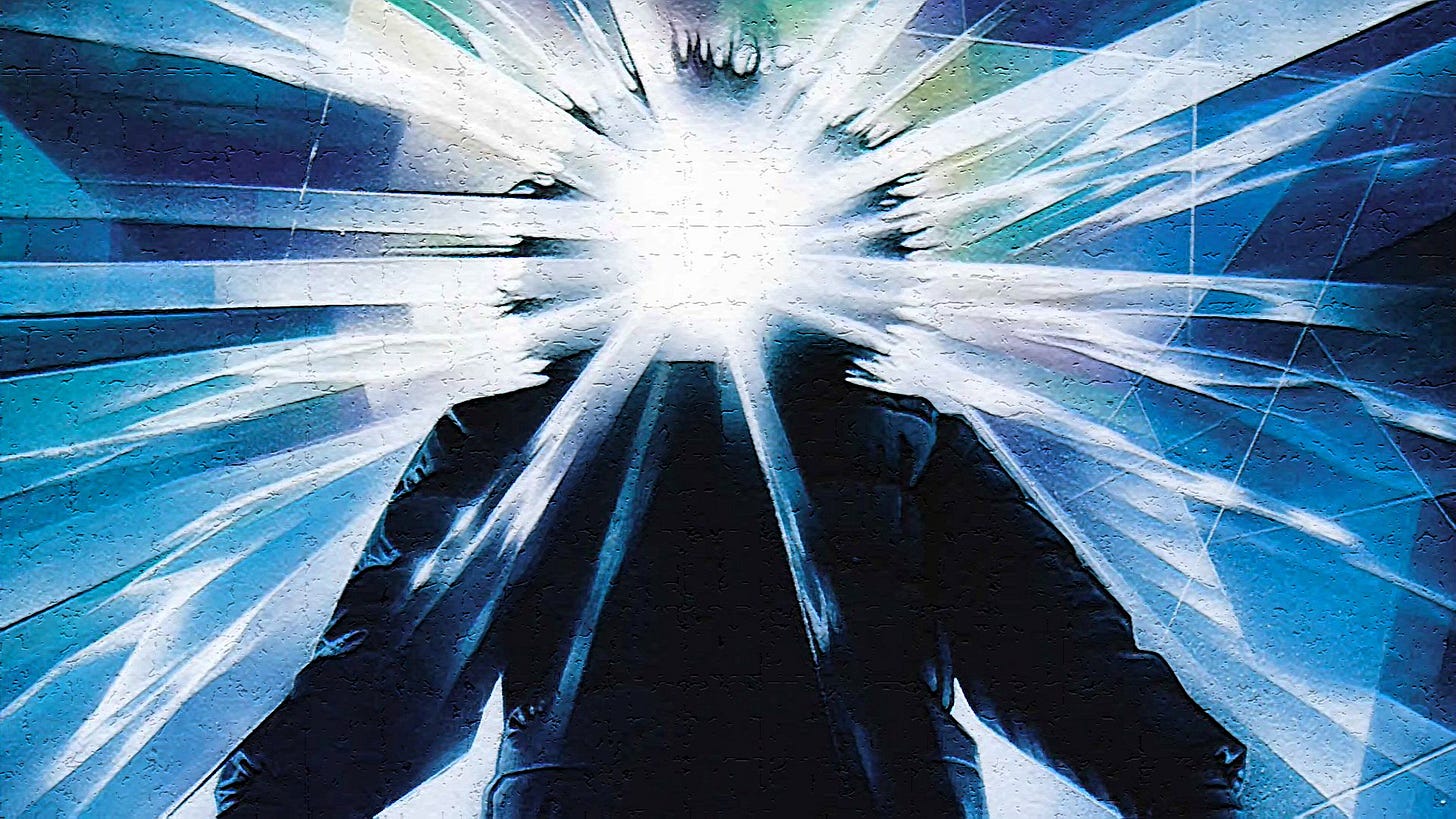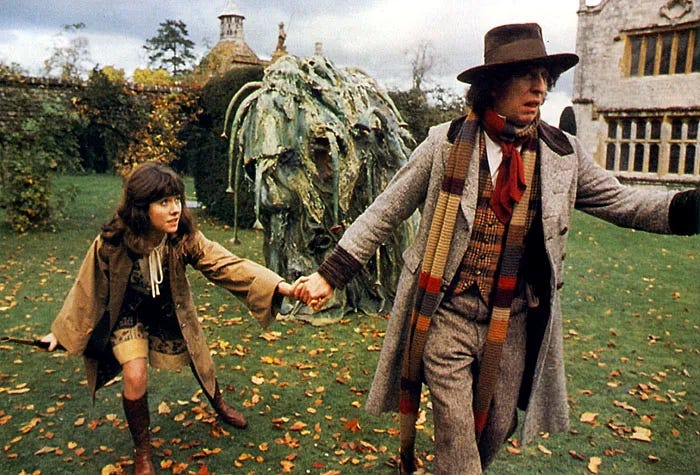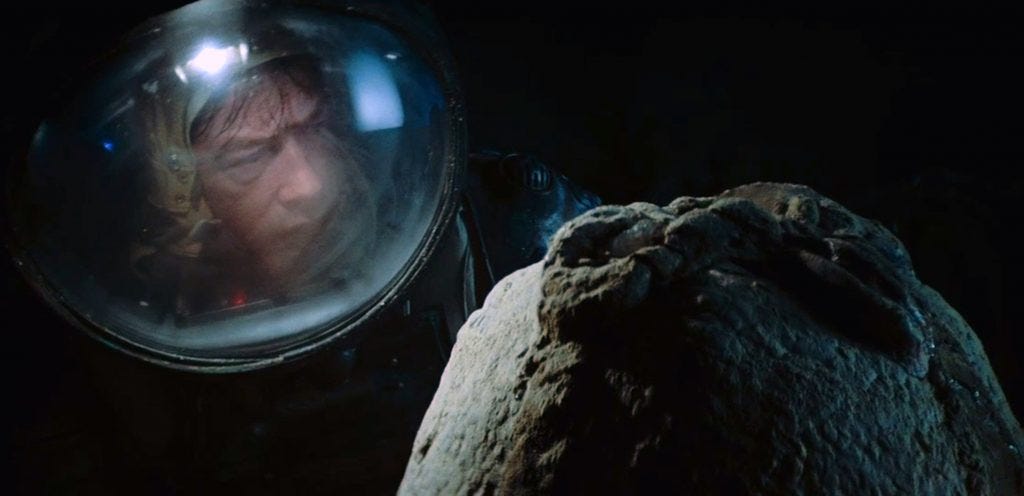Bring Something Back...
70 years after The Quatermass Experiment, our culture is still infected with its spores.
It is 70 years since Nigel Kneale’s ‘Quatermass Experiment’ invented the modern TV serial, and the modern science fiction story, and just about everything else in modern pop culture and franchise fantasy that we assume was… you know… just there. A quick filler for the TV service – what else to put on? A classics adaptation? – turned out quickly for a £250 script fee (though that was the department’s entire writing budget), it was broadcast, emptied the pubs for six weeks (in that traditional measure of early TV significance), and, because plans to record it were abandoned, it was never seen again. But like a cultural comet that passes roughly once a century, Alexandra Palace, its original home, staged it again last night for an audience who – if they were anything like me – knew plenty about it, but had never sat through it.
What blew me away about the rehearsed reading of those six episodes from the very birth of television, was how Nigel Kneale’s screenplay arrived finished and perfect. If you were going to write it from scratch today, you would hope to use the same words, the same pacing, the same ideas. I can’t think of any 1953 TV or radio script you’d not want to tighten or update or polish. You couldn’t restage The Goons and hope to re-bottle the same energy. But the performance last night worked perfectly, gripped in the same way, delightfully free from camp, balancing the domestic and the epic, the personal and the mythic. There was even that Marvel-formula balance of the gritted-teeth and the sitcom funny, with authentic Coronation-Street grade comic relief springing from a supporting cast of dignified Ealing Film archetypes, alongside heroic science-fantasy tropes that still do service in every CGI epic that tentpoles the summer blockbuster season.
The template Kneale worked out is the one we still use. The elements and style identical. Its influence is definitive. This is how you do it. He invented our common language of fantasy and horror. He expressed how we feel about the infinite and the impossible. Quatermass contains elements of the gothic and the supernatural and Victorian and Edwardian science fantasy, natural inheritances from other literature – Wells, Shelley, Wyndham, Verne, Lovecraft – but it was written so fast, in such a burst of energy, that it seems to have burned most of that stuff off on re-entry.
What’s fascinating to me is that Quatermass’ virulent cultural seeds have spread without direct cross-generational transmission. It’s a collective memory – there was something called Quatermass once, and it electrified austerity Britain – but we don’t grow up watching it now, or reading it, unless we’re super-fans, and seek it out. It’s not Star Wars or James Bond or Batman or Star Trek. Nobody sits you down as a kid in front of Quatermass. The (mainly inferior) film versions of the original TV serials aren’t even that mainstream, they’re pure cult. I think my knowledge of the franchise came originally from a pastiche of Pit that I heard once on a Goons LP from the library.
But its spread within our shared minds is colossal, and deep, but invisible, like alien fungal roots.
In cultural terms, Quatermass should be lost, a piece of 1950s theatre with an unusually large audience (thanks to a big transmitter), but known now only by reputation. We know it happened but until last night we can’t put ourselves through the same experience as the original viewers, and so we can’t understand it fully. So we struggle to compare. To appreciate its influence. It remains only as a folk memory - a very Kneale idea. But a modern retelling of the same tale would – I realise today – be very much the same. It would even include the voguish British folk-horror elements - something you’d never think maybe to mesh into science fiction, but are entangled within Quatermass like imitated cellular matter, copied from a different organism. That chilling stage direction - I’d never heard before, of course, until it was intoned from a pulpit last night - where the assimilated astronaut turns briefly into the Green Man is exactly what you’d type now, thinking you’d really smashed this one. Fusing mythic traditions with speculative science fiction. What a new idea! Nope.
That original set of half a dozen half hour cliffhangers remains the masterclass in how to do modern science fiction horror. It defines and fixes the language of ideas available. When Quatermass faces down the swelling existential threat at the end, throbbing and oozing amongst the pillars of Westminster Abbey, he strides in alone, as if daring the military (who is it this time? Is it UNIT, or the US Army from end of The Iron Giant, or SHIELD…?) to unleash its missiles and flames with an unarmed hero standing at ground zero… When Quatermass then proceeds to talk the monster to death, by dragging out the humanity within, posing questions, forcing the villain to confront the theme… that’s the climax of… everything. That’s where it’s from. That’s the beat we still do. I saw Doctor Strange give it a good few goes in various Marvel films. Staring up at an amorphous interdimensional monster that was woven from indeterminate matter (and a lot of CGI, rather than, as Kneale had at his disposal, some gardening gloves.)
But however that scene is achieved, the shift culturally is that the monster is not a lion or a giant or a dragon, or even a Lovecraftian god. It’s a Nigel Kneale thing. A threat he invented. And one we borrow again and again, because it seems to tell a better story than even man vs shark. One we need to tell. And Nigel Kneale found that for us.
Before this television-era story about how things spread and merge and replicate uncontrollably - ending with the world-threatening bloat of the creature happening live on television, and spreading like a meme to everyone’s homes, which, thanks to this serial, it was actually doing in real life - monsters weren’t like this. Aliens were aliens. Take me to your leader. The bug-eyed threat was like the one in the marvellous scene in the cinema, where the monster and the child watch a cheesy 50s sci fi flick about Buzz Lightyear and his best gal fighting dragons in a moon crater. That was the monster and the hero you got before this story rendered it too stupid to enjoy. Kneale shows it to you for comparison. Which would you prefer? And we picked his version.
We chose this new story. About the unstoppable, amorphous, assimilating force that isn’t evil, or cruel, or our nemesis. It isn’t Ming or the Mekon. It isn’t interested in us. It isn’t even interesting in itself. It is barely worth considering as a psychopath or an enemy. We don’t matter; we are just matter. That’s a new idea. The single stroke of writing genius that propels the rocket of the narrative is that the locked room mystery at the start of The Quatermass Experiment – how can two astronauts vanish from a sealed rocket and only one return alive? – isn’t a mystery at all… provided you don’t see three astronauts as three separate organisms. If you just see humanity as… stuff. That’s the monster you’re fighting. On the walk home, I thought. ‘Oh yeah. That’s whats’s scary about the film Under The Skin.’ The baby on the beach, all that hungry black goop. And it is.
Because if you want to make a modern pop culture nightmare, a thing to fight, here’s the toolkit. You could take this half-remembered formula from a script almost nobody reads now, and none of us can watch (unless someone stages it), and make… whatever you like. You could do a franchise about rapacious insect-like space xenomorphs. Or a thriller about a research team being assimilated by a hybridising alien in the snow. Or you could build yourself a long running children’s cliffhanger space-and-time show with this same monster in it fairly regularly, under different names.
And of course, against Kneale’s express wishes they did exactly that. Within John Higgs’ theory of ideaspace and memes the viral spread of writing, Doctor Who is a cultural parasite that uses imaginative children as a host, so the idea-organism can survive generation after generation, and ensure its own survival. Quatermass’ 1953 broadcast is the moment the seed is implanted. Watching the staging last night, all I could think of was the egg in Alien exploding in John Hurt’s face.
In fact it’s not that, is it? Because that’s not the first planting of the parasite. That happened in 1953. It’s the moment that Bernard Quatermass spots the dark globular spore producers within the organism writhing inside Westminster Abbey. A space very like the cathedral spaceship Ridley Scott requested and... which is the same. Before the speech about how it will spread. How it is unstoppable. Like they do in The Thing. Before the beast is reasoned with, not exploded, the unstoppable out-thought, told it cannot win, told that humans will not let it destroy their essence. Like they do at the end of every Marvel film I can currently remember. Oh, and in most Doctor Who.
Because Quatermass is the first time that egg explodes, and the spores go into us all.
And then, of course, someone says if we don’t stop it, it will replicate and absorb and spread across the globe, entangle itself within us, change us, and live forever.
Which, in terms of story, it did.










